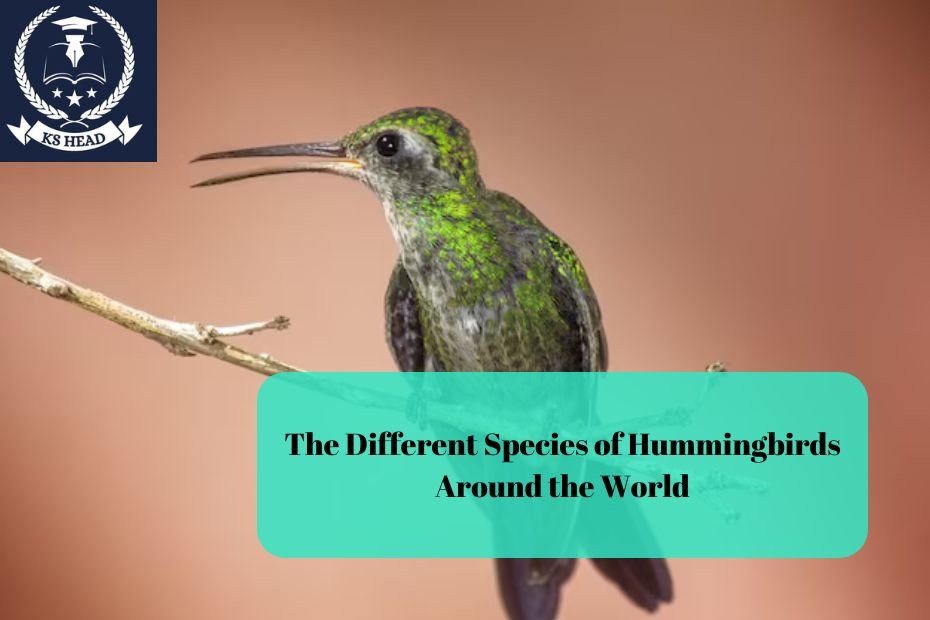Hummingbirds are among the most captivating and unique birds on the planet. Their iridescent feathers, remarkable flying abilities, and tiny size make them a favorite among birdwatchers and nature enthusiasts alike. With over 330 recognized species, hummingbirds can be found primarily in the Americas, from Alaska to Tierra del Fuego. This article will explore the different species of hummingbirds around the world, their characteristics, habitats, and some interesting facts that highlight their extraordinary nature.
Understanding Hummingbirds
General Characteristics
Hummingbirds belong to the family Trochilidae and are known for their remarkable agility and speed. These small birds can hover in mid-air, fly backward, and even upside down. They have a rapid heartbeat, which can exceed 1,200 beats per minute during flight, and their wings can beat anywhere from 50 to 80 times per second, depending on the species.
Hummingbirds are also known for their unique feeding habits. They primarily feed on nectar from flowers, which provides them with the necessary energy. Their long, specialized bills allow them to access nectar deep within flowers, and their tongues are designed to lap up the sugary liquid. Additionally, hummingbirds consume small insects and spiders for protein.
Distribution
While hummingbirds are predominantly found in the Americas, they are most diverse in Central and South America. They inhabit a variety of ecosystems, including tropical rainforests, mountain ranges, deserts, and urban gardens. Some species are migratory, traveling great distances between their breeding and wintering grounds.
Notable Species of Hummingbirds
1. Ruby-throated Hummingbird (Archilochus colubris)
The Ruby-throated Hummingbird is perhaps the most recognized species in North America. Males are easily identified by their brilliant ruby-red throats, while females have a more muted coloration. This species breeds in eastern North America and migrates to Central America for the winter.
Ruby-throated Hummingbirds are known for their remarkable migration, traveling over 3,000 miles between their breeding and wintering grounds. They are often seen at feeders filled with sugar water and are attracted to brightly colored flowers.
2. Anna’s Hummingbird (Calypte anna)
Found along the western coast of North America, Anna’s Hummingbird is a year-round resident in areas like California. Males display stunning iridescent green and red plumage, making them a favorite among bird watchers. Females are less colorful but equally charming.
Anna’s Hummingbirds are unique in that they can breed year-round in warmer climates, thanks to their ability to find food sources throughout the year. They are known to be aggressive at feeders, often defending their territory against other hummingbirds.
3. Black-chinned Hummingbird (Archilochus alexandri)
The Black-chinned Hummingbird is prevalent in the southwestern United States and parts of Mexico. Males have a distinctive black throat with a purple base, while females are more subdued in color.
These birds are highly adaptable and can thrive in various habitats, including deserts and gardens. They are also known for their long migrations, moving to Mexico during the winter months.
4. Rufous Hummingbird (Selasphorus rufus)
The Rufous Hummingbird is famous for its fiery orange-red plumage and aggressive behavior. This species breeds in the Pacific Northwest and migrates to Mexico for the winter, covering an impressive distance of up to 4,000 miles.
Rufous Hummingbirds are known for their territorial nature, often chasing away other birds from feeders and flower patches. Their bold behavior and vibrant colors make them a favorite among bird watchers.
5. Violet-crowned Hummingbird (Amazilia violiceps)
The Violet-crowned Hummingbird is found in the southwestern United States and Mexico. Males are identified by their striking violet crown and green body.
This species prefers arid habitats, often seen in desert scrub and gardens. They are known for their long migrations, traveling between breeding and wintering grounds, and their agility in accessing nectar from various flowers.
6. Green-breasted Mango (Anthracothorax viridis)
The Green-breasted Mango is a large hummingbird species found in Central America and parts of the Caribbean. Males exhibit vibrant green plumage with a striking blue crown, while females are less colorful.
This species prefers tropical habitats, including rainforests and gardens. They are known for their powerful flight and can often be seen hovering near flowers to access nectar.
7. Long-tailed Sylph (Aglaiocercus kingii)
The Long-tailed Sylph is a stunning hummingbird species native to the Andean mountains of Colombia and Ecuador. Males have a long, iridescent tail and striking green and blue plumage. Females are less colorful but still beautiful.
This species prefers high-altitude habitats, often seen in cloud forests and montane regions. They are known for their remarkable flying skills, darting quickly between flowers to feed on nectar.
8. Sword-billed Hummingbird (Ensifera ensifera)
The Sword-billed Hummingbird is unique due to its exceptionally long bill, which is longer than its body. This adaptation allows it to feed on flowers with deep corollas that other birds cannot access.
Found in the Andean regions of Colombia, Ecuador, and Peru, this species is a fascinating example of evolution’s role in adapting to specific feeding niches. Their remarkable bill gives them access to nectar sources that are out of reach for many other birds.
9. Blue-throated Hummingbird (Lampornis clemenciae)
The Blue-throated Hummingbird is one of the largest hummingbird species found in the United States and Mexico. Males are distinguished by their vibrant blue throats and green bodies, while females have more muted colors.
This species prefers riparian habitats and is often found near water sources, making them a beautiful sight in gardens and parks. They are also known for their melodious calls, which can be heard during courtship displays.
10. Flame-colored Tanager Hummingbird (Tangara Parzudakii)
The Flame-colored Tanager Hummingbird is a striking species found in the cloud forests of Central America. Males are known for their brilliant orange and yellow plumage, while females have more subdued colors.
This species thrives in high-altitude environments, often seen flitting between flowers in search of nectar. Their vibrant colors and unique habitat preferences make them a special sight for bird enthusiasts.
Hummingbird Conservation
Threats to Hummingbirds
Many hummingbird species face threats from habitat loss, climate change, and the use of pesticides. As their natural habitats are destroyed for agriculture and urban development, these birds lose essential food sources and nesting sites. Additionally, climate change impacts the timing of flower blooming, affecting the availability of nectar for hummingbirds.
Conservation Efforts
Various organizations and researchers are working to conserve hummingbird populations through habitat preservation, public education, and creating awareness about the importance of these incredible birds. Planting native flowers, creating hummingbird gardens, and reducing pesticide use can all help support hummingbird populations in urban and suburban areas.
Interesting Facts About Hummingbirds
- Fastest Bird: Hummingbirds are the fastest birds in the world relative to their size. The Ruby-throated Hummingbird can reach speeds of up to 60 miles per hour during mating displays.
- Memory Masters: Hummingbirds have excellent memories, allowing them to remember the locations of flowers and feeders. They can also recall which flowers have been visited and when, ensuring they always find fresh nectar.
- Tiny Eggs: Hummingbird eggs are among the smallest bird eggs in the world, typically measuring about the size of a pea. A female can lay two eggs per clutch, and the incubation period is about two weeks.
- Unique Migration: Some species, like the Ruby-throated Hummingbird, undertake extraordinary migrations. They can fly non-stop across the Gulf of Mexico, a distance of about 500 miles, during their migration.
- Color Perception: Hummingbirds can see a wider range of colors than humans, including ultraviolet light. This ability helps them locate flowers with the most nectar, as many plants have markings visible only to birds.
Conclusion
Hummingbirds are fascinating creatures that play a vital role in our ecosystems. With their incredible diversity, unique adaptations, and striking beauty, they continue to captivate the hearts of people around the world. Understanding the different species of hummingbirds and their habitats is essential for their conservation and ensuring these remarkable birds thrive for generations to come.
FAQs
- How many species of hummingbirds are there?
- There are over 330 recognized species of hummingbirds, primarily found in the Americas.
- What do hummingbirds eat?
- Hummingbirds primarily feed on nectar from flowers, supplemented by small insects and spiders for protein.
- Do hummingbirds migrate?
- Yes, many hummingbird species migrate long distances between their breeding and wintering grounds.
- How can I attract hummingbirds to my garden?
- Plant native flowering plants and provide hummingbird feeders filled with a sugar-water solution to attract these birds.
- Are hummingbirds endangered?
- While not all species are endangered, habitat loss and climate change pose significant threats to many hummingbird populations. Conservation efforts are crucial to their survival.

